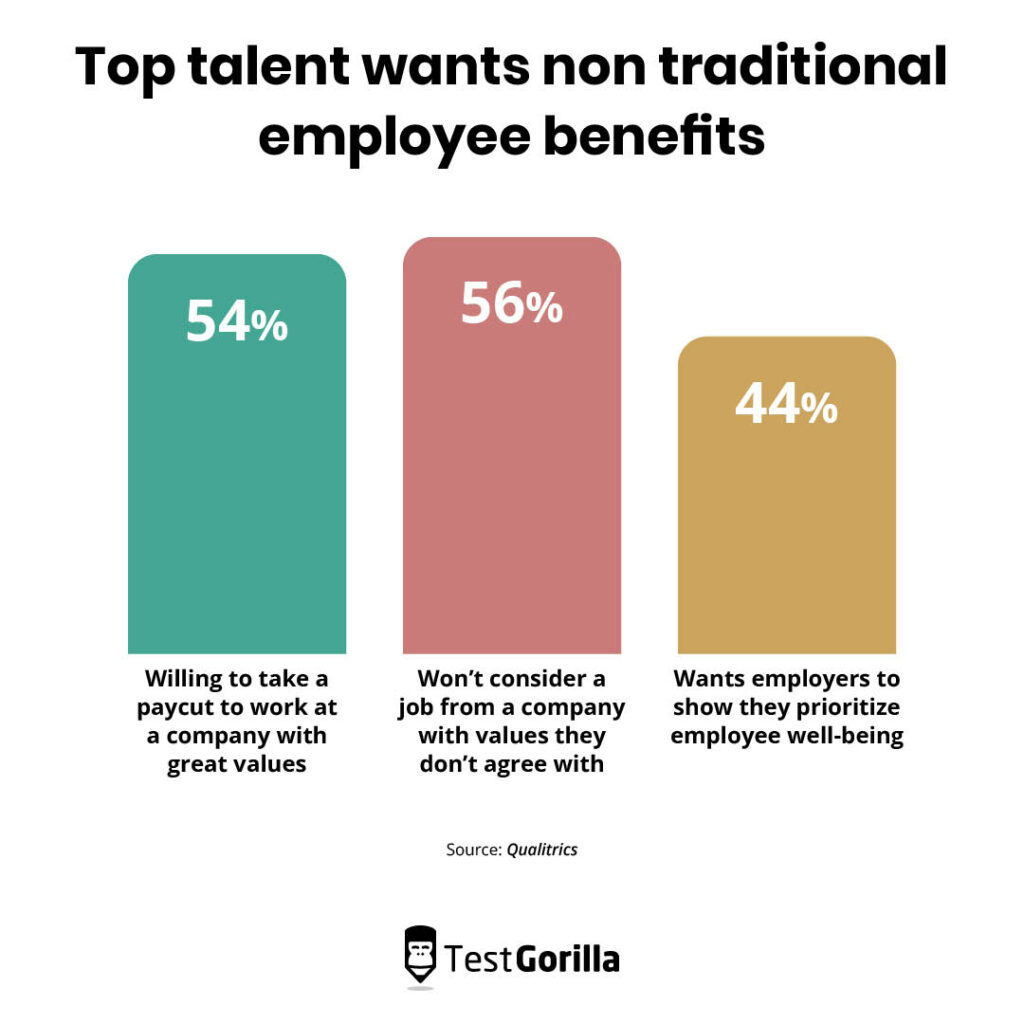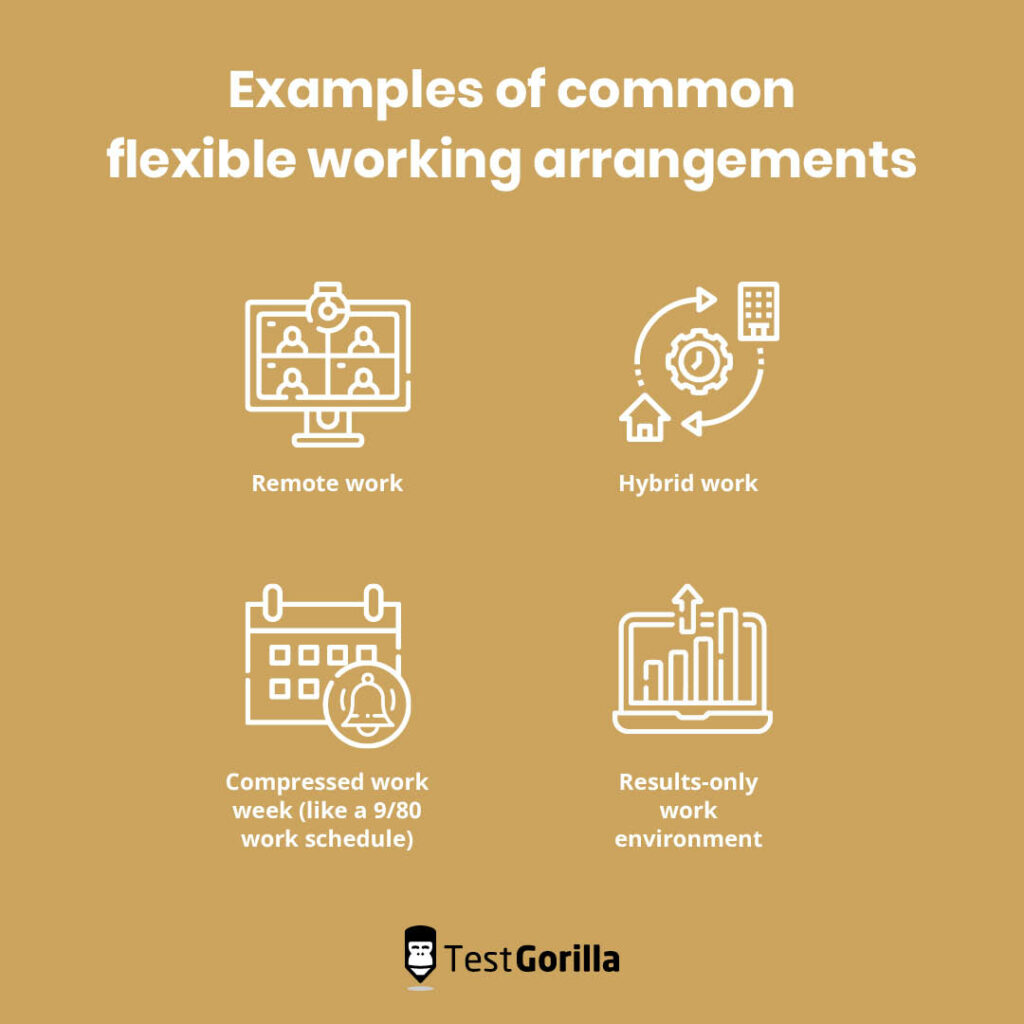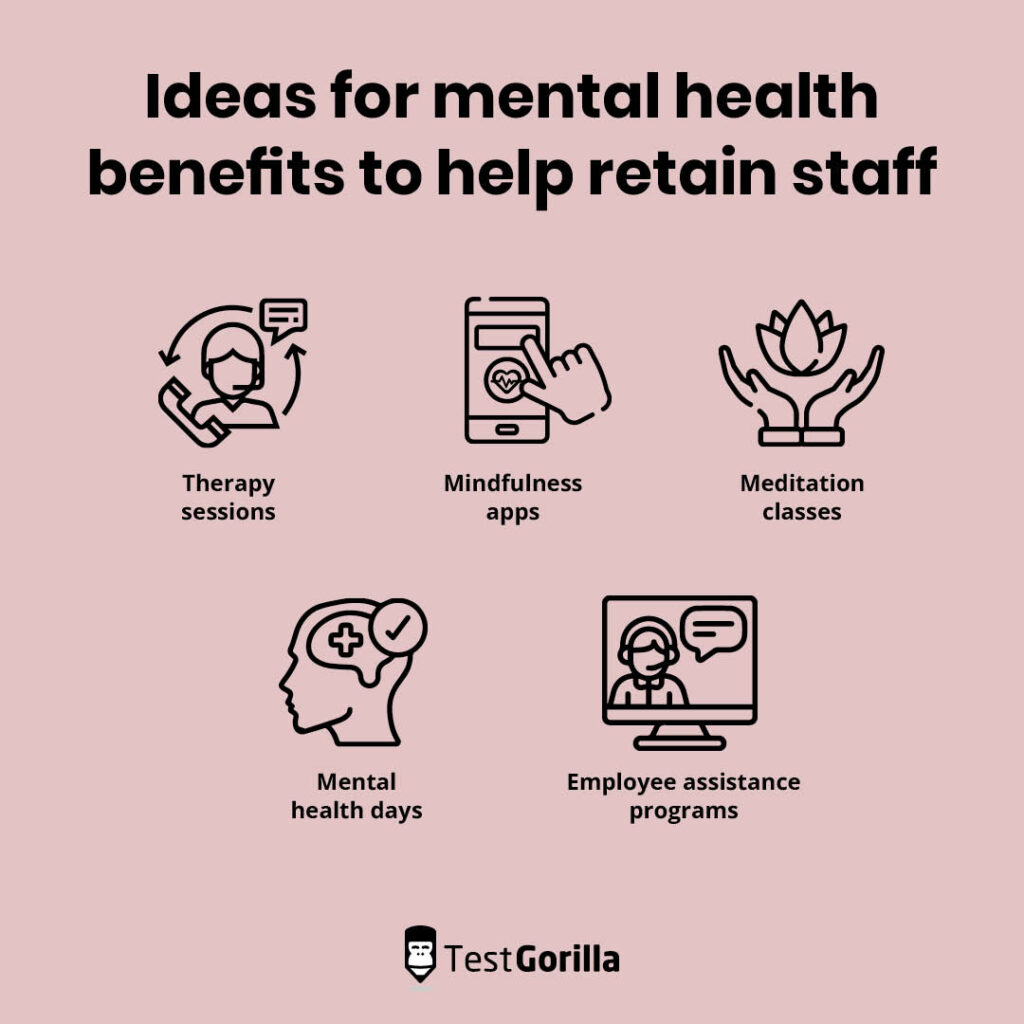The top 8 non traditional employee benefits to set your company apart
Every company is working hard to attract and retain talent in the current market.
This also means your company has a lot of competition when it comes to securing a candidate with the right skills.
What’s the solution?
Make your organization stand out by adding non traditional benefits to your perks package.
Non traditional benefits aren’t the same life insurance and pension incentives every business offers. Rather, these benefits include flexible work arrangements, mental health days, and other demands of the modern worker.
Including non traditional benefits in a job offer shows candidates your values. They’re a promise to both current and potential employees that you’ll support them and treat them right.
This article discusses the differences between traditional and non traditional benefits and shares our top eight non traditional benefits to offer your workforce.
Table of contents
What are non traditional employee benefits?
Non traditional employee benefits are different from historically common workplace benefits, such as pensions and vacation time. Examples of non traditional benefits include mental health days, flexible working arrangements, and childcare support.
The demand for benefits has changed since the pandemic. When workplaces were mainly physical, it made sense to have free lunches, fitness centers, and ping-pong tables. But a distributed workforce demands new and different benefits.
These innovative employee benefits make offers more lucrative and enticing. Most traditional benefits, such as vacation days, health insurance, and pension contributions, are seen as standard and don’t distinguish one job offer from another.
Alternative benefits for employees aren’t just nice to have for most people – they’re a necessity for a large number of candidates. Working parents need childcare support, and many applicants have to work remotely.
This means that if you aren’t offering these non traditional employee benefits, you’re losing out on a lot of applicants.
The advantages of non traditional benefits for employees
We’ll get right to the biggest benefit of offering non traditional employee benefits:
You can offer these benefits to attract good employees.
Of course, it also helps offer your current staff the benefits they want and need. This increases job satisfaction and employee retention, among other things.
But the top reasons companies want to offer creative employee benefits are to improve their brand, distinguish their business from others, and make their job offers more lucrative.
Let’s take a look at three similar job offers for a marketing manager. They have similar salaries but are set apart by the benefits they offer:
Company A | Company B | Company C | |
Salary | $95,000 | $100,000 | $98,000 |
Benefits | Health, dental, and vision coverage; Life insurance; Three weeks of vacation; Professional development assistance; Wellness account | Health, dental, and vision coverage; Life insurance; Three weeks of vacation; Professional development assistance; Employee mental health assistance | Health, dental, and vision coverage; Life insurance; Three weeks of vacation |
Non traditional employee benefits make job offers less about direct compensation and more about the overall package.
Employee wants and needs have changed. It’s become normal to expect these innovative employee benefits, so companies have to adjust to modern demands.
These benefits are even more attractive to a fully remote or a hybrid workforce. Remote employees don’t get much use out of traditional perks like free lunches or an onsite gym.
Additionally, they signal your organization’s values to potential candidates. They show that you care about your employees as people and are more than ready to move with the times.
A study by Qualtrics showed that 54% of workers would be willing to take a pay cut to work at a company with better values. A further 56% wouldn’t even consider a job offer from a business whose values they disagree with.
The same study showed that 44% of employees want employers to prioritize weighing in on employee well-being.
Alternative benefits for employees help you attract the best talent, retain your current talent, keep your company up to date with modern trends, and improve your brand image.
So let’s dig into the benefits themselves.
The best insights on HR and recruitment, delivered to your inbox.
Biweekly updates. No spam. Unsubscribe any time.
The 8 best non traditional employee benefits that help you attract and retain top talent
Some of the most popular non traditional benefits include, but aren’t limited to, flexible working arrangements, learning and development, and better mental health care.
Let’s take a look at eight of the top non traditional employee benefits more closely.
Summary
Benefit | Description |
Financial planning and advice | Assist employees with financial advice, debt repayment, and budgeting |
Flexible working arrangements | Offer employees a flexible work schedule and location |
A professional development budget | Enable employees to strengthen their professional futures by offering career development help |
Work-life balance policies | Help workers balance their work and life demands by adopting better vacation policies |
Mental health perks | Show your employees you care about mental health by offering therapy sessions and mental health days |
Physical wellness and nutritional programs | Change up your usual wellness programs to help both in-office and remote workers |
Family planning and childcare | Facilitate employees having a family by offering family planning assistance and a childcare stipend |
Social connections for remote and hybrid workers | Ensure your distributed workforce feels like a part of the team by fostering a connection between them and the rest of the organization |
1. Financial planning and advice
Traditionally, employee financial benefits just aimed to help workers with retirement via 401(k)s, but the modern age calls for smarter monetary assistance.
An increasing number of businesses are broadening their idea of financial assistance for their workers, typically through something called a financial wellness program.
Financial wellness programs can help with debt repayment assistance, budgeting, and saving for major purchases. They also support future retirement goals like traditional 401(k)s.
Helping your employees with financial demands isn’t just a great way to attract applicants – it also positively affects their quality of work.
Everyone has felt pressure from debt or an unpaid bill, but data now backs up how impactful it can be on your job performance. A 2022 study by PwC revealed that personal financial issues negatively affect several aspects of employees’ work and personal lives, including:
Mental health
Sleep
Self-esteem
Physical health
Relationships at home
Productivity at work
Attendance at work
Employee financial wellness programs aim to reduce stress stemming from financial concerns and improve overall performance and productivity.
These programs can also offer advice and education, which are incredibly valuable to workers.
Often, financial problems can be handled by having the correct strategy. Providing employees with financial planning services can arm them with the knowledge they need.
Financial planning services can help educate workers on important topics like debt management, budgeting, identity theft protection, and home buying.
2. Flexible working arrangements
Flexible working arrangements are one of the most popular non traditional employee benefits. This flexibility gives employees more options when it comes to the location and hours they work.
Enabling an employee to have flexible working arrangements (if the position allows for it) is a powerful, smart move. A report by Owl Labs showed that one in three employees would quit their jobs if they couldn’t remain remote after the pandemic.
Another survey showed that 55% of workers would leave a position if they didn’t have autonomy over their schedules.
Offering flexible work carries myriad benefits:
Happier employees and lower turnover
More sustainable practices with a reduced carbon footprint
Reduced costs
Better support for parents, students, and people with alternative lifestyles
And the most obvious benefit of flexible working arrangements is that they are an extremely attractive job offer for potential candidates.
There are plenty of different types of flexible work, so you can choose one or more that fit your company and roles the best.
Here are a few common types of flexible working arrangements:
Remote work
Hybrid work
Compressed work week (like a 9/80 work schedule)
Results-only work environment
You can make it easier to implement your flexible working policy by building a defined procedure for flexible workers. Write up a formal flexible policy, including reimbursement for buying a work-from-home station.
For our entire in-depth guide on the subject, read our blog post on adopting a flexible working policy.
3. A professional development budget
Every employee craves professional growth.
No matter which stage of their career they’re in, employees want to develop their skills and grow.
These benefits most commonly come in the form of a yearly professional development budget or an education stipend and are highly sought after by potential candidates.
One study showed that 70% of US employees say they’re at least somewhat likely to leave their current organization and accept an offer with a new company known for investing in employee learning and development.
A lack of learning opportunities can cause employee turnover – but a surplus of it attracts great new talent.
Here are a few common ways to offer professional development:
Online courses
In-office classes
Mentorship programs
Industry conferences and summits
All of these can be part of a great professional development program. Investing in a robust professional development program (PDP) and helping employees create one enables them to reach their goals and reaffirms their value.
For an in-depth guide on PDPs, check out our article on building a professional development plan.
4. Work-life balance policies
We bet you’ve been hearing “work-life balance” more than ever, and it’s for a good reason.
Employees want (and need) a good work-life balance; according to one poll, 67% of employees believe that balance is even more important than pay. The same study showed that work-life balance was the most important aspect of a job for work-from-home, hybrid, and in-office employees.
A healthy work-life balance isn’t solely up to the worker to handle, and there are many ways your business can help.
Kathryn Kendall, the chief people officer at Benefex, speaks about how her company encourages a healthy work-life balance by giving employees the day off on their birthdays (or the closest weekday if their birthday falls on the weekend).
Here are a few solid work-life balance policies to adopt:
The option to buy extra vacation days
A few company three-day weekends
Half-day Fridays in the summer
Mandated week-long closures
The last policy is a common practice in Europe, with countries like France, Spain, and Italy closing their businesses down for extended periods in August.
There are many options, so you can look through them and see what fits your organization and employees best.
5. Mental health perks
Mental health is just as important as physical health, and thankfully, more employees and employers are prioritizing it.
A 2021 study showed that 97% of employees believe that their employers should be working harder to improve their employees’ mental health. The same study showed that 76% of employees say mental health benefits are critical when considering a job offer.
It’s clear that the demand for mental health is here to stay, and businesses have to invest time and money into supporting it to stay relevant. Part of this is fostering a positive environment and monitoring toxic behaviors, but benefits are also an important factor.
Here are a few ideas for mental health benefits:
Therapy sessions
Mindfulness apps
Meditation classes
Mental health days
Employee assistance programs
Employee assistance programs are usually provided at little to no cost to employees. Such programs can offer counseling and help with anxiety, grief, and substance abuse.
Although these programs are helpful, many employees aren’t even sure if their companies offer them.
Because of this, we advocate making it a clear benefit and actively encouraging employees to sign up.
Mental health care is important for every employee, but it can be vital when creating a healthy environment for people who have suffered trauma. For more information, read our guide on creating a trauma-informed workplace.
6. Physical wellness and nutritional programs
Physical wellness isn’t a new benefit, and it’s always been a top contender for one of the most sought-after employee benefits.
Our idea of what exactly constitutes good wellness benefits has changed, not only because remote workers have different needs but also because modern ideas of health have evolved.
Wellness programs are still focused on improving physical health through exercise, healthy eating, and reducing unhealthy habits like smoking.
Here are a few ideas for wellness benefits for both remote and in-office employees:
Remote | In-office |
Online fitness class subscriptions; A budget for fitness equipment; Healthy meal deliveries; Fitness apps | Group classes; Walking trails; Fitness competitions; Smoking cessation programs |
The bottom line is that an increasing number of people want to improve their health, so you can make employees or potential candidates happier by facilitating a healthier lifestyle for them.
7. Family planning and childcare
Our society is changing for the better, and we no longer have a rigid structure with a working man and a housewife. Every person now has the right to work and earn a living.
But this means that organizations need to lend a hand to facilitate having and supporting a family. Too many women are expected to give up their careers to support children, and businesses must help them navigate this complicated situation.
You can offer a solid family planning program that provides support for:
Adoption processes
Fertility treatments
Surrogacy planning
Longer parental leave
Time off for pregnancy loss
Ensure this program is friendly to LGBTQIA people and uses inclusive terminology, like “parental leave” or “family leave” instead of “maternal leave.” Everyone deserves to be included in this care, and many people avoid needed care because of triggering terms.
Furthermore, these terms are inclusive of the partner who isn’t carrying the child yet also needs time off around the birth.
For more information on inclusive terminology, read our diversity, equity, and inclusion glossary.
Your business can also help families by offering childcare assistance.
Childcare costs in the US can exceed $1,300 per month, and a childcare allowance for working parents can be a lifesaver.
Availability is another concern surrounding childcare because juggling pick-up times between a single working parent or two working parents can be nearly impossible.
As an employer, you can help with availability by offering working parents flexible working arrangements so that they can work their schedules around childcare. Alternatively, you can offer onsite childcare.
Patagonia, an American retailer of outdoor clothing, has stellar family-affirming policies, including onsite daycare. This program reduced the company’s turnover drastically, with parents having 25% less turnover than its average employee population.
For more information on this topic, read our guide on how your company can support working parents.
8. Social connections for remote and hybrid workers
Remote and hybrid employees need to feel connected. Maintaining a strong connection helps distributed workers feel like a part of the team, instilling loyalty and increasing retention.
An amazing number of workers want flexible work, but the biggest drawback to this setup may be the lack of socialization. Providing better opportunities for remote workers to connect with one another enables them to socialize and combat working-from-home depression.
There are smaller, more casual ways to enable connection, such as:
Virtual water coolers like Donut and S’Up
Slack channels for off-the-cuff chatter
Virtual game nights over video conference
But there are also large ways to connect hybrid and remote employees, like yearly corporate get-togethers.
TestGorilla holds one of these annually. In 2022, we went to Barcelona, Spain!
Annual or semi-annual trips and get-togethers enable your whole team to connect and bond, which helps remote employees feel a little less distant.
Read our guide to engaging remote employees for more ideas on this subject.
The key: Combine traditional and non traditional benefits
Increasingly, more employees want non traditional employee benefits – and for some, they’re a necessity. But this doesn’t mean you should get rid of traditional benefits.
These benefits aren’t mutually exclusive, and a smart benefits package uses both to create an attractive offer overall.
Our benefits package at TestGorilla includes:
A learning and development budget
Unlimited paid time off (and encouragement to actually take said time off)
Flexible hours
The flexibility to work from anywhere in the world (and travel while working)
Wellness sessions every three weeks
An employee referral program with reward tiers
Yearly offsite get-togethers
Share appreciation rights
A yearly remote tech budget
Our remote tech budget is used on anything that will improve day-to-day work and productivity. Our employees have used it to upgrade their home offices with desks, chairs, headphones, laptops, and more.
It’s also good to keep in mind the option of personalizing benefits packages. It’s a great idea to talk with your current employees and ask them what they would get the best use out of.
Non traditional employee benefits are the way forward
Non traditional benefits for employees are sweeping the modern landscape, and they’re quickly becoming a must-have.
Employers offer benefits to attract good employees. If the best talent wants these new creative benefits, you have to adapt to secure these stellar candidates.
Creative employee benefits like flexible work, childcare, and better professional development assistance make your job offer stand out.
To read more about attracting more candidates, read our blog post on how to increase job applicants.
If you’re looking for a great way to assess these applicants, sign up for a free demo to learn more about our skills assessments.
You've scrolled this far
Why not try TestGorilla for free, and see what happens when you put skills first.
























